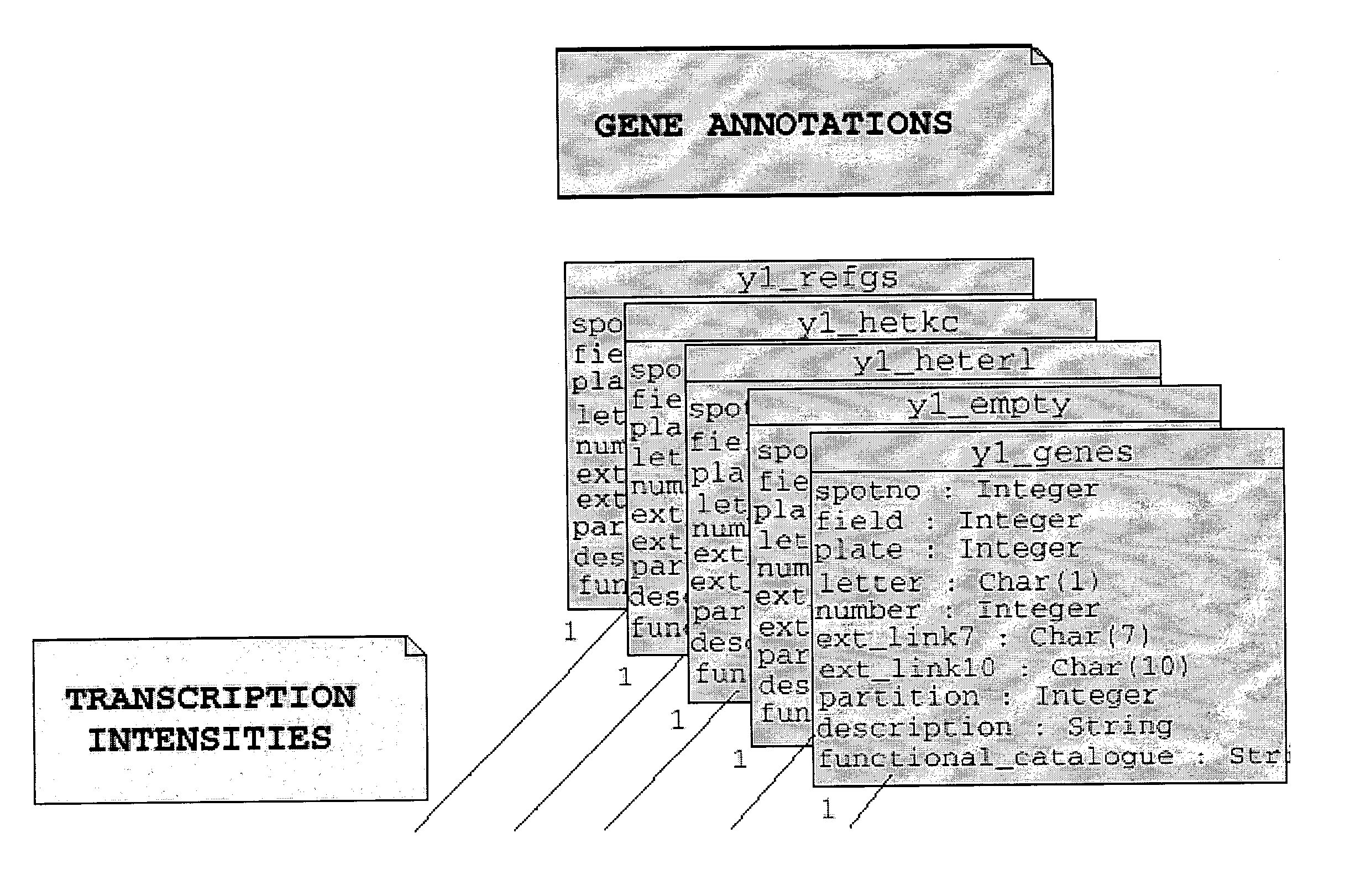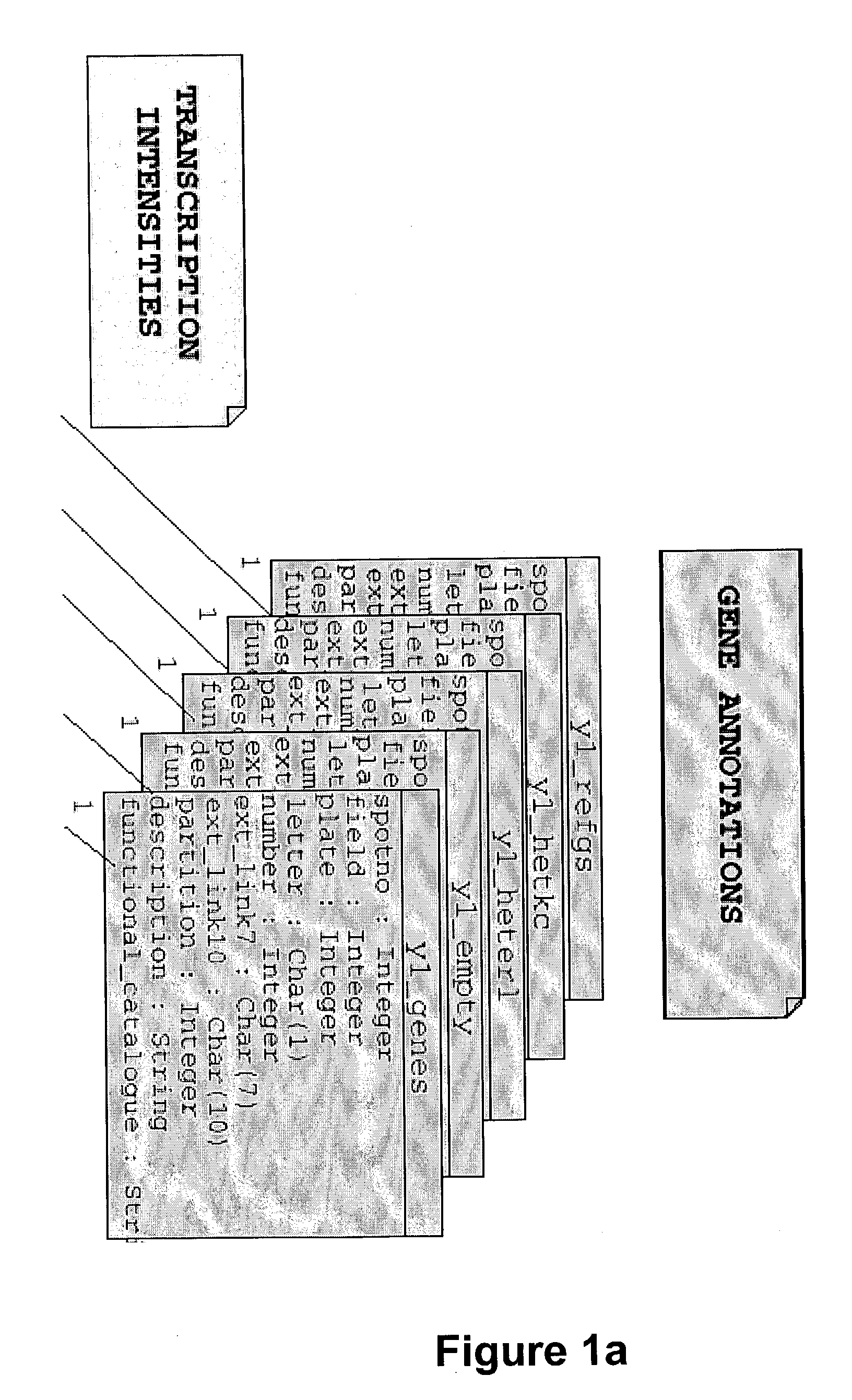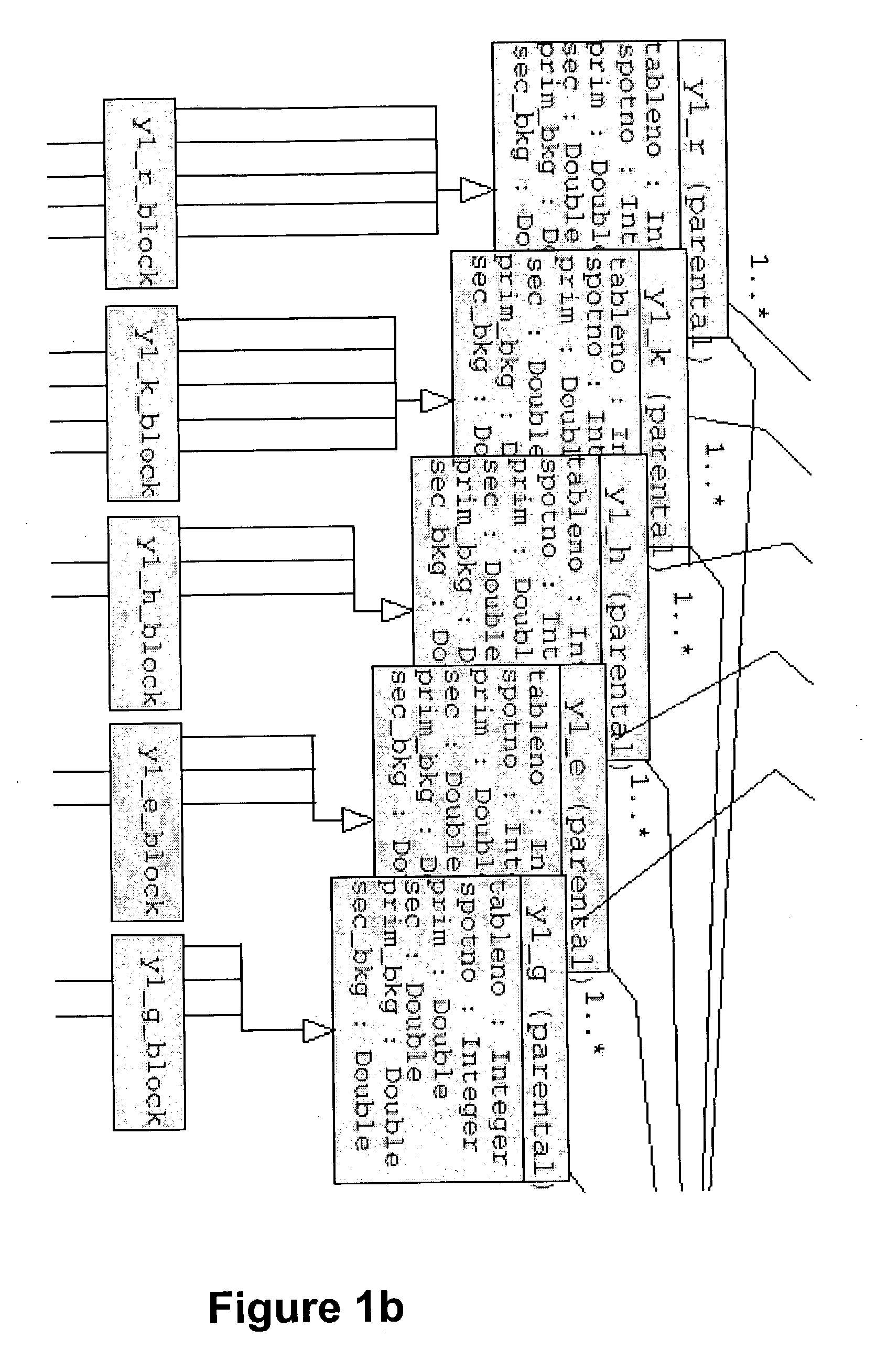Data warehousing, annotation and statistical analysis system
a data warehousing and statistical analysis technology, applied in material analysis, instruments, measurement devices, etc., can solve the problems of impede the reliable use of annotations for statistical analysis, inaccessible computer aided analysis, and in the free-text format of annotations,
- Summary
- Abstract
- Description
- Claims
- Application Information
AI Technical Summary
Benefits of technology
Problems solved by technology
Method used
Image
Examples
Embodiment Construction
[0117] Yeast strain FY1679 (MATa / MATa ura3-52 / ura3-52 trp 63 / TRP1 leu2 1 / LEU2 his3 200 / HIS3 GAL2 / GAL2) was grown to mid-logarithmic growth phase when the culture was split and hydrogen peroxide added to a final concentration of 200 mM. Samples were taken 5, 10, 15, 20 and 30 min after treatment. Cells were harvested for RNA preparation as described in a paper by Hauser, N. C., Vingron, M., Scheideler, M., Krems, B., Hellmuth, K., Entian, K. & Hoheisel, J. D. (1998) entited "Transcriptional Profiling on all open Reading Frames of Saccharomyces cerevisae" published in Yeast 14, 1209-1221. Radioactive labelling by reverse transcription and hybridization to the PCR-based whole genome DNA-array were performed according to the method of the Hauser et al reference.
[0118] The raw intensity data as obtained from AIS imaging software (Imaging Research Inc., St. Catherines, Canada) were normalized as described in a paper by Fellenberg, K., Hauser, N. C., Brors, B., Neutzer, A., Hoheisel, J. D....
PUM
 Login to View More
Login to View More Abstract
Description
Claims
Application Information
 Login to View More
Login to View More - R&D
- Intellectual Property
- Life Sciences
- Materials
- Tech Scout
- Unparalleled Data Quality
- Higher Quality Content
- 60% Fewer Hallucinations
Browse by: Latest US Patents, China's latest patents, Technical Efficacy Thesaurus, Application Domain, Technology Topic, Popular Technical Reports.
© 2025 PatSnap. All rights reserved.Legal|Privacy policy|Modern Slavery Act Transparency Statement|Sitemap|About US| Contact US: help@patsnap.com



